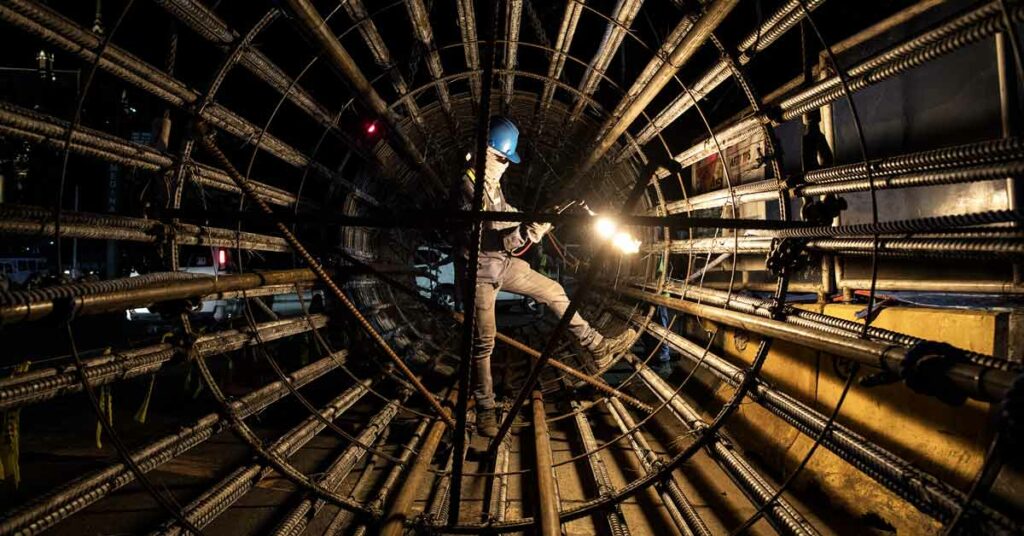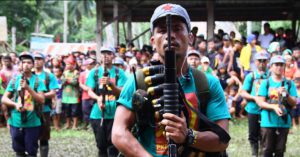
Now that President Rodrigo Roa Duterte (PRRD) is at the tail end of his presidency, many would claim that his administration has been characterised by change and some remarkable accomplishments. Hence, most Filipinos are clamouring for a continuity of the Duterte legacy. They want to see whoever wins in the 2022 Presidential elections building on his successes while improving on areas of governance.
Nevertheless, the political opposition and President Duterte’s political detractors and critics claim otherwise despite the current administration having ushered in change and achieving much in facilitating development and progress in many sectors and areas of governance.
One of the noteworthy areas of change under the Duterte administration has been infrastructure. Duterte shepherded the “Golden Age of Infrastructure” of the Philippines through his “Build Build Build (BBB) Program” by building railways, trains, subway, highways, roads, new ports, airports, bridges, and even building classrooms for students.
The BBB program in many ways is an illustration of the fervent resolve of the Duterte administration to not only accelerate development but to deliver much-needed projects to bridge the infrastructure gap in the country. One has to take cognizance of the fact that, the lack of infrastructure development in the Philippines has long been pointed out to be the “chink in the armour” or one of the “weakest links” in the overall economic development of the country.
DOTr
For more than five years, the Duterte administration through the able leadership of the Secretary of the Department of Transportation (DOTr) Arthur Tugade, has completed 214 airport projects across the country including the newly inaugurated Bicol International Airport while more than 100 more are ongoing including the Bulacan International Airport or the New Manila International Airport.
In the maritime sector, the DOTr and the Philippine Ports Authority have already completed 451 world-class seaports and working on 101 more.
The railway sector was also dramatically and significantly improved. Some of the important rail infrastructure projects include the Common Station, MRT-3 Rehabilitation, MRT-7, Metro Manila Subway, LRT-1 Cavite Extension Project, LRT-2 West Extension, Subic-Clark Cargo Railway, the massive North-South Commuter Railway (NSCR) Project, and the Mindanao Railway.
According to the DOTr, most of the rail projects that it is implementing were conceptualised, planned, and started decades ago, such as the Mindanao Rail in 1957, the Metro Manila Subway in 1973, the North-South Commuter Railway or PNR Clark in 1994, LRT-2 East Extension in 1999, LRT-1 Cavite Extension in 2000, MRT-7 in 2001, and the Common Station in 2006.
For the first time, the country is taking on the construction of the Metro Manila Subway – the first-ever in the country. The concept for a subway mass transport project started in 1973. After 50 years, the first subway in the Philippines is under construction and on its way towards realisation. This is thus far unprecedented. The subway has been coined as the “Project of the Century” in the Philippines.
DPWH
Likewise, the Build Build Build program was able to finish the construction of 497 kilometre (km) of bike lane networks in Metro Manila, Metro Cebu, and Metro Davao which is important nowadays because many Filipinos use bikes as alternative vehicles since the advent of the COVID-19 pandemic.
The Duterte administration through the able leadership of former Secretary Mark Villar of the Department of Public Works and Highways (DPWH) was able to construct 29,264 km of roads, 5,950 bridges, 11,340 flood mitigation structures, 150,149 classrooms, 223 evacuation centres, and 1,253 km of new high standard highways and expressways in Luzon, Cebu, and Davao.
BCDA
Likewise, the Bases Conversion and Development Authority (BCDA) under its former hardworking President and Chief Executive Officer Vivencio Dizon has thus far also achieved much under the Duterte administration.
For over five years, it has collected PHP48 billion (US$945.8 million), with a large portion of the income amounting to PHP34.2 billion (US$673.8 million) going to the Armed Forces of the Philippines (AFP). This is thus far the highest collection in any administration since the creation of the BCDA.
Of the PHP34.2 billion (US$673.8 million) that went to the AFP, close to PHP10 billion (US$197 million) went to the replication of affected military facilities of the Philippine Navy (PN), Philippine Army (PA), and Philippine Air Force (PAF), while PHP24.3 billion (US$478.8 million) was contributed to the AFP Modernization Fund, according to Dizon.
The BCDA also completed New Clark City’s Phase 1 of which among the newly constructed facilities include the Aquatics Center and Athletics Stadium built for the 30th Southeast Asian (SEA) Games in 2019.
The Athletics Stadium was a finalist for the World Stadium of the Year in 2019 and is also a finalist in the World Architectural Festival 2021, which will be held in Lisbon, Portugal in December 2021. According to Dizon, this is the first time that a structure made by any government has received such international recognition and accolades.
Another remarkable achievement of the BCDA under the Duterte administration is the newly opened Terminal 2 at the Clark International Airport, which boasts state-of-the-art facilities and world-class architectural design. It was also nominated as one of the best-designed airports in the world in the Prix Versailles World Airport Selection for 2021 in France.
The construction of the National Academy of Sports, the planned relocation of national government agencies outside Metro Manila, and the isolation of 25,000 COVID-19 patients in New Clark City are part and parcel of the achievements of the BCDA.
Thus far, these are just some of the accomplishments of the Build Build Build program under the leadership of President Duterte. Many infrastructure projects are still in the pipeline and under construction.
Hindsight And Perspective
The delivery and completion of “BBB” projects within the target timeframe under the current administration are imperative for they will not only steer and drive economic recovery of the country amid the pandemic, but will to some degree enhance, improve and further develop land, air, sea, and inter-island connectivity and mobility.
One should never forget that infrastructure is vital and one of the foundations of a strong and globally competitive economy. These infrastructure projects serve as key impetus and facilitators to balanced development and to a greater extent will diffuse economic activities and development from the urban centres of the country to rural areas.
The transport-related infrastructure projects will not only ease traffic and road congestion in the National Capital Region (NCR) and other traditional urban areas like Metro Davao and Metro Cebu but will also facilitate transporting people and goods from one island to another.
The completion of these infrastructure projects, in the long run, will not sustain, accelerate, and achieve the desired economic growth but most importantly, will improve the Philippines’ global competitiveness.
As what President Duterte said last Thursday (22 October 2021) during the opening and inauguration of the Sariaya Bypass Road in Lucena Quezon, infrastructure development plays a vital role in the full reopening of the Philippine economy amid the quest to bounce back from the economic devastation caused by the COVID-19 pandemic.
“As we continue to overcome the current pandemic and carefully reopen our national and local economies, infrastructure development will play a vital role in our success,” Duterte said.
Duterte further explicated that pursuing more infrastructure projects in the countryside would not only lead to inclusive growth but to greater productivity and progress, which can be achieved through improved mobility, including efficient access to goods and services.
He added that the successes of the BBB program are an affirmation of his administration’s strong commitment to improving the quality of life of Filipinos by pursuing strategic infrastructure projects across the country, thereby improving connectivity, increasing the people’s mobility, creating jobs, and dispersing economic activity throughout the regions.
Conclusion
When choosing the next president of the Philippines and a new set of elected officials and leaders in the upcoming 2022 elections, Filipinos must pick candidates who will build on the successes of the BBB program.
This Is Part 2 In A Series Of Articles On The Duterte Legacy
Source: The ASEAN Post
https://theaseanpost.com/article/dutertes-legacy-golden-age-infrastructure



